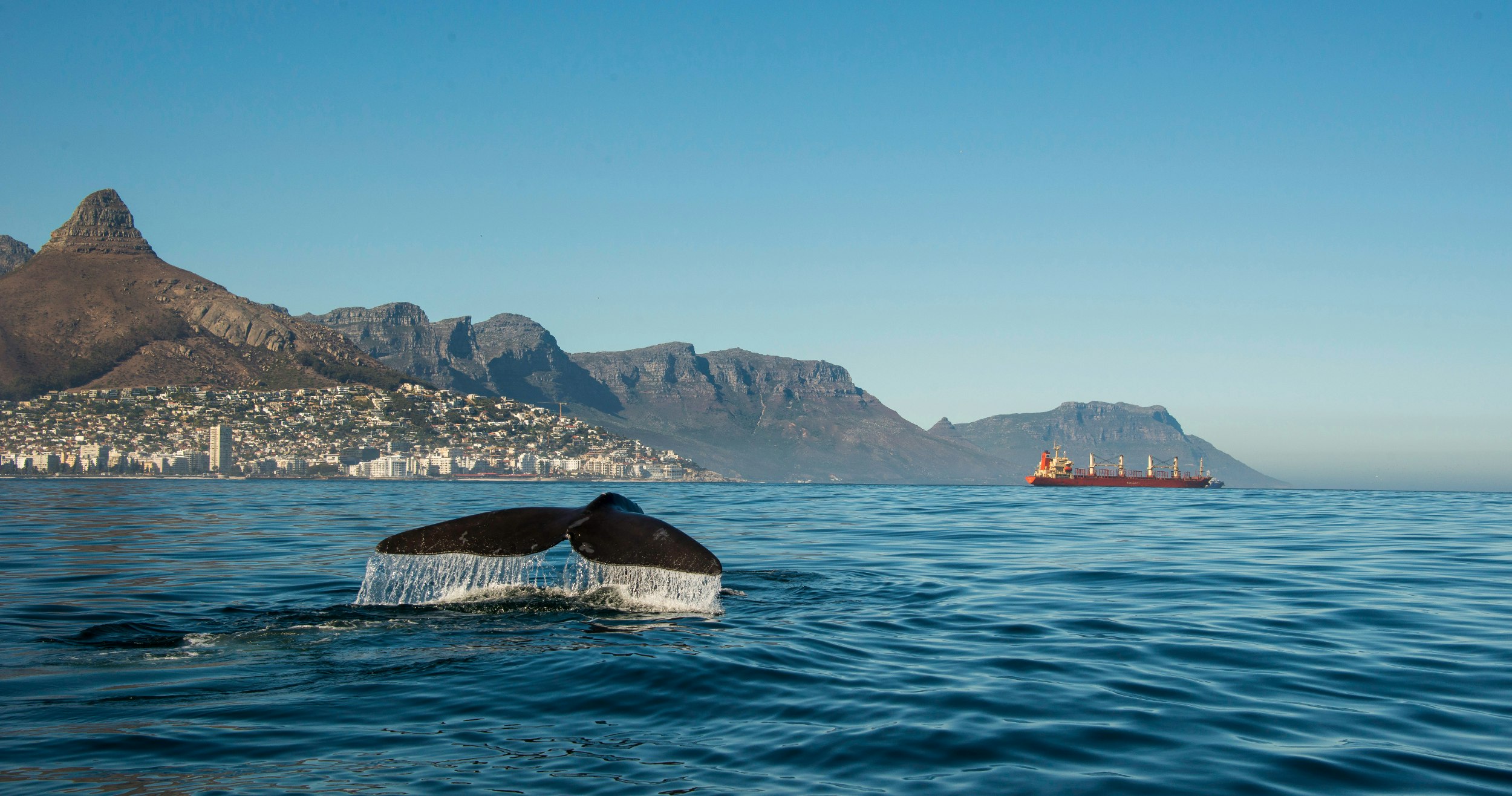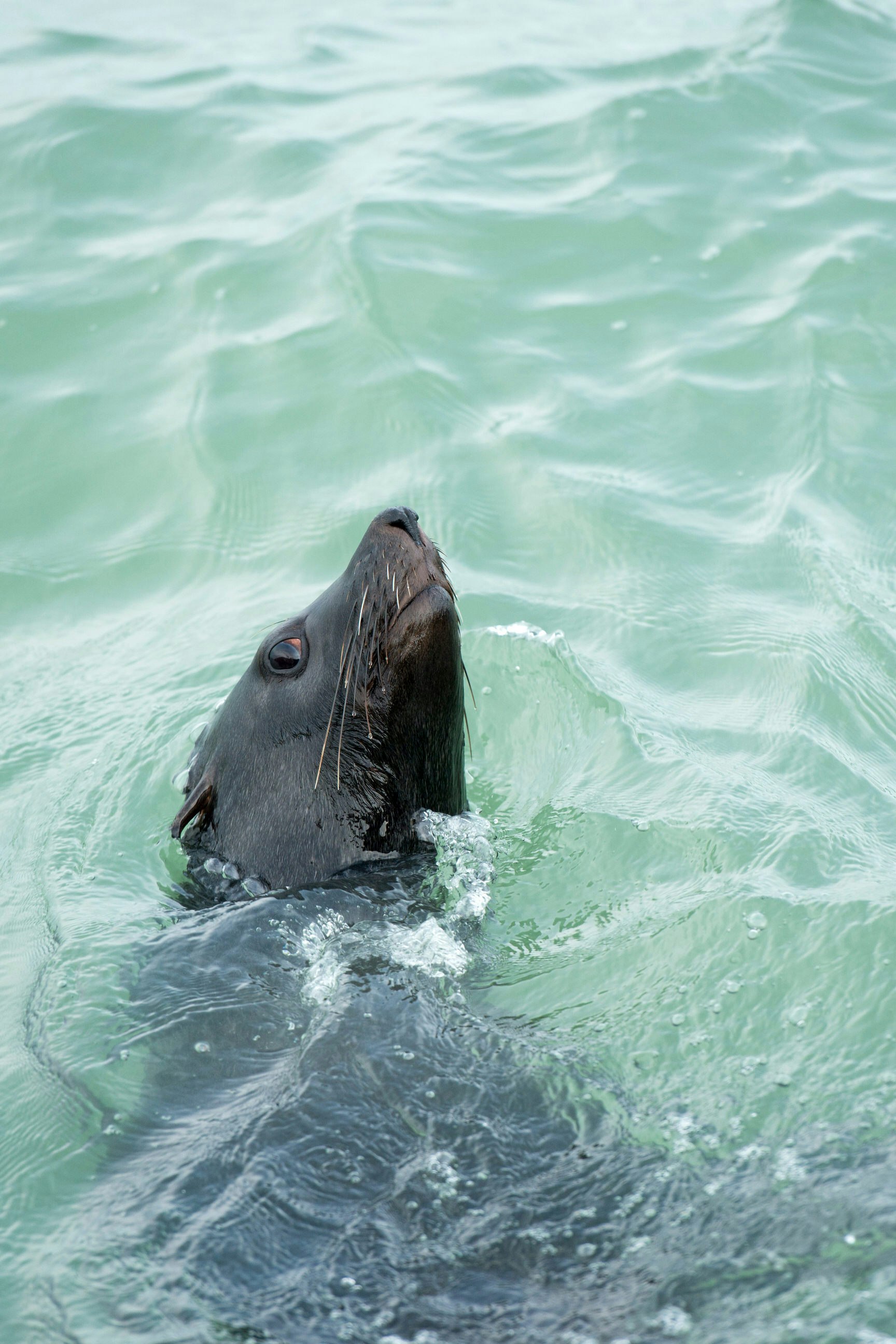Blessed with a wonderful natural environment, Cape Town is definitely one of the most beautiful cities in the world. And between Table Mountain National Park, the V&A Waterfront and the new Zeitz Museum of Contemporary Art Africa, the city certainly has a lot to offer.
But most visitors to the Mother City, as Cape Town is also known, miss out on the city’s urban wildlife. As overshadowed by South Africa’s famous Big Five animals, many people don’t realize that Cape Town is actually a wildlife lover’s dream destination.
From African penguins and fur seals to southern right whales and rock hyrax, here’s our guide to five of Cape Town’s urban fauna and how to see them.

African penguin
African penguins, formerly known as jackass penguins because of their vocalizations, inhabit the African continent. At only 68-70 cm long and weighing 2-5 kg, they are surprisingly small compared to their larger emperor and king penguin cousins. African penguins can swim at an impressive 20 km/h and dive as deep as 130 meters in pursuit of fish, crustaceans and small squid. Tragically, despite the South African government’s efforts to protect the birds, African penguins are an endangered species, with their population declining from 4 million at the beginning of the 19th century to 200,000 at the beginning of the 21st. Which is reduced to only 55,000 today.
Where to see them: The lively but smelly penguin colony on Boulders Beach in Simonstown, 40 kilometers south of Cape Town, is the best place to see these cute little birds. From just two breeding species in 1983, today the colony numbers about 3,000, although that number is now declining at an alarming rate. There are three boardwalks beyond which you are not allowed, but you will be able to observe them up close, breeding, nesting, waddling, swimming, and interacting with each other and their young. There is an entrance fee of R152 as Boulders Beach is part of the Table Mountain National Park. Fees go towards penguin conservation. If you want to escape the crowds – of humans, that is – walk about five minutes to the small mountain in the southeast. There may be some penguins, but nothing close to what you’ll find on the official site.

South Right Wheel
Although many species of whales swim in Cape waters, the most common are right whales. Southern right whales are distinguished by their callosites (rough patches of barnacle-covered skin) on their heads, in addition to their long arched mouths and trademark double blowholes. They average 15 meters in length and can weigh up to 60 tons. The whales make the annual migration from Antarctica to the coast of Cape Town to give birth, usually arriving in June and staying until November, disturbing locals and tourists alike, with the flaking (of their tails). (exposing the white part below) go hand in hand. and spying (lifting your head vertically out of the water).
Where to see them: Closer to the city, the best place to see these gentle giants is in False Bay. On land, the best options are high points along the False Bay coastline, such as Cape Point, Boise Drive between St James’s and Kalk Bay, and Clarence Drive between Gordon’s Bay and Roy Ellis. To get closer, Simonstown Boat Company offers whale-watching tours. Further afield, 120 kilometers southeast of Cape Town, Hermanus is rated as one of the top 12 whale-watching spots in the world. World Wildlife Fund. Land-based viewing opportunities are good here as whales often come within meters of shore. A long stretch of cliffs provides plenty of vantage points and terraces to look out over the Old Harbour. During whale-watching season, a whale carrier alerts visitors to the whale’s presence by blowing a kelp horn. For up close and personal encounters with right whales, humpback whales, dolphins and other cetaceans, Hermanus Whale Cruise, Whale watching Hermanus. And Southern Right Charters offer boat-based excursions. Walker Bay Adventures also offers whale watching from a sea kayak.
11 Family Friendly Activities in Cape Town

African fur seal
The African fur seal, commonly known by its former name – the Cape fur seal – is the largest of all fur seal species. These seals have strong, solid bodies protected by a velvety coat of dark gray or brown fur, small outer ear lobes, and large, broad heads. Males average 2.3m in length and weigh 200-300kg. Their back flippers are quite short, with fleshy tips, while the front flippers are long and have little hair on them.
Where to see them: Cape Town seals are used to humans and are not timid. They can usually be seen basking in the sun on the V&A Waterfront, but it’s certainly not the most pleasant place to see them as their offensive odor can be detected from dozens of meters away. If you want to meet pinnipeds at their social and playful best, you’ll need to take a boat tour or sail to Seal Island, a rocky island about 6 kilometers off the coast of False Bay. Must join snorkeling excursion. Based in Hout Bay, Cape Town Bucket List and Duiker Island Cruises both take small boats to the island where you’ll see a few hundred seals lounging, barking, throwing themselves off the rocks, and fishing (or swimming) in the ocean. If you visit in the off-season, you’ll have it all to yourself.
10 Alternative Ways to Explore Cape Town’s V&A Waterfront

Rock hyrax
Commonly known as rock daisies among locals, these cute little herbivores are no bigger than a groundhog, although they are actually the closest living thing to an elephant. Dassies are characterized by short, stocky bodies, small ears, short tails, sweet liquid brown eyes, black button noses, and thin, curved lips that give you the disturbing impression that they are smiling as they stare at you. As their name suggests, the Desis favor rocky, mountainous areas where there are many large boulders between which they can find shelter and shade, and on which they bask in the early morning and late afternoon sun. Enjoys walking.
Where to see them: Hike Table Mountain on the cliffs surrounding the park or by cable car, or hang out with the penguins at Boulders Beach between Simonstown and Cape Point.

Malachite Kingfisher
With over 610 recorded bird species in Cape Town, the Mother City is a birder’s paradise. One of the most colorful and impressive of Cape Town’s avian species is the malachite kingfisher. This bird is common in South Africa but also elusive, which explains why birders and photographers are so eager to capture it with their lenses. Only 3cm long, these Lilliputian river kingfishers are hard to spot from a distance, but their purple, black, malachite green and bright metallic blue plumage and long orange beaks help them stand out.
Where to see them: Malachite kingfishers are attracted to wetland habitats. In Cape Town you can see them from bird hides. Rietvlei Wetland Reservea 15-minute drive from the CBD, or on Intaka Island, a wetland and bird sanctuary curiously situated in the grounds of a shopping centre.
